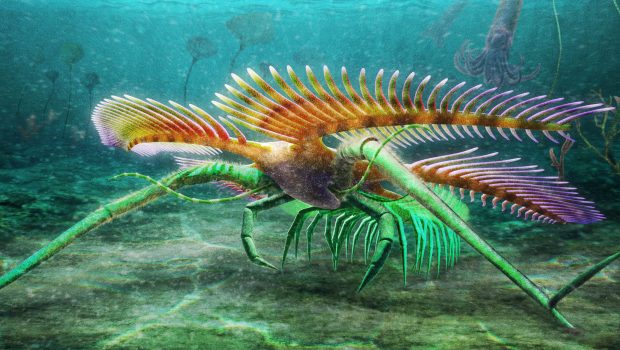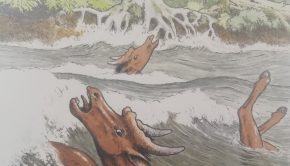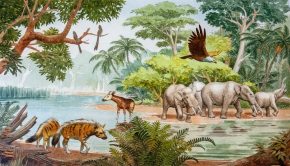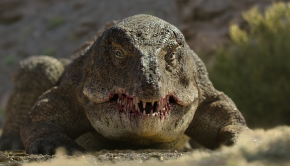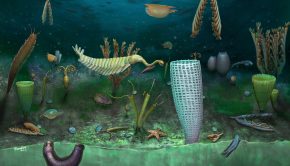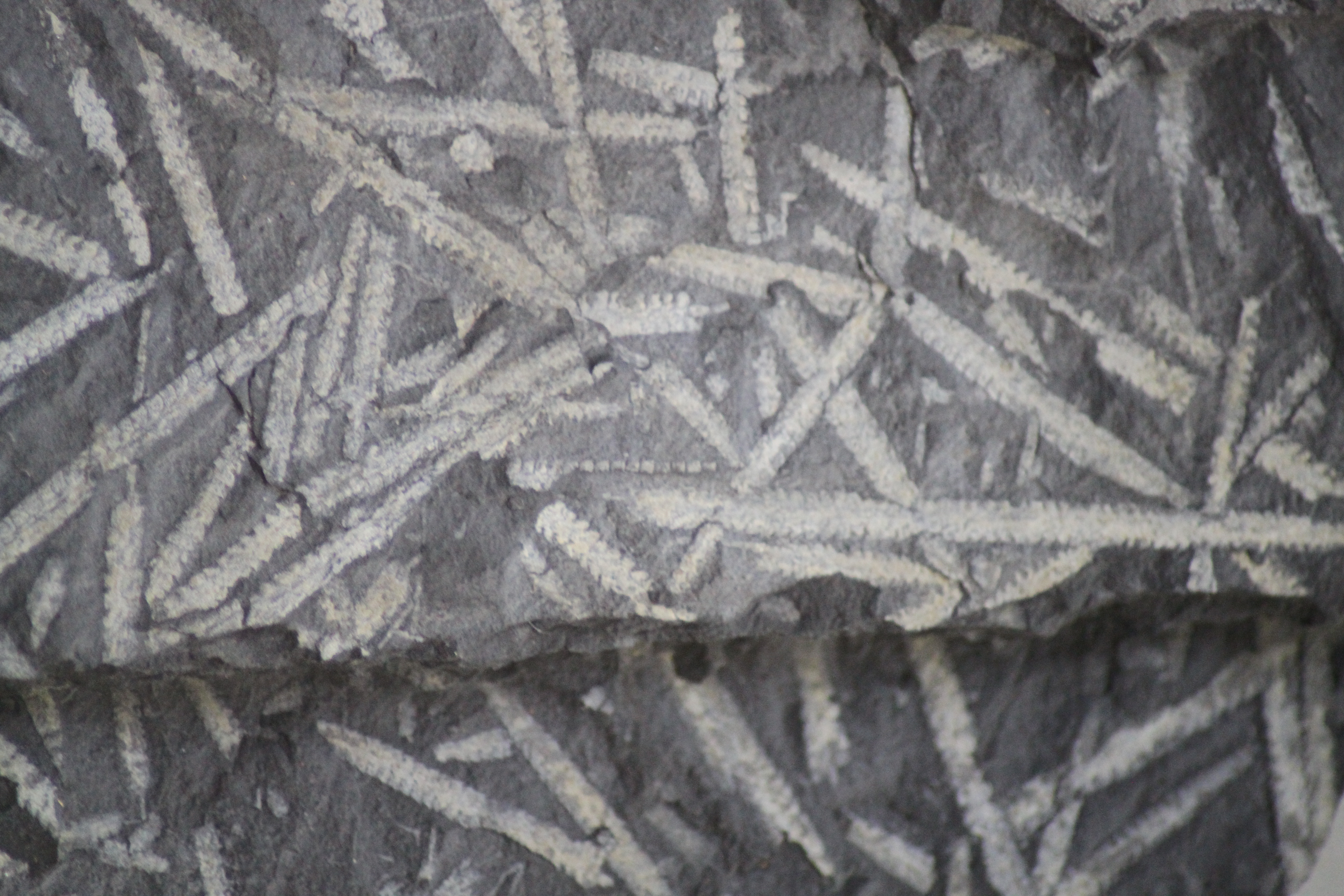Episode 139: Marrellomorphs
Marrellomorphs are the group of early Paleozoic arthropods that get their name from the well-known Burgess Shale fossil Marrella splendens. They have for a long time been considered to be closely related to the trilobites, based on similarities in their gills, whilst other studies have suggested they could be closer related to mandibulate arthropods (crustaceans, insects & myriapods), although their strange appearance means other relationships might still be plausible.
Since they have a soft exoskeleton, marellomorphs have a very poor fossil record and so the discovery of any new specimens outside of the Burgess Shale can be incredibly significant. In this interview, we speak to Joe Moysiuk of the University of Toronto and Royal Ontario Museum about his newly described species Tomlinsonus dimitrii.
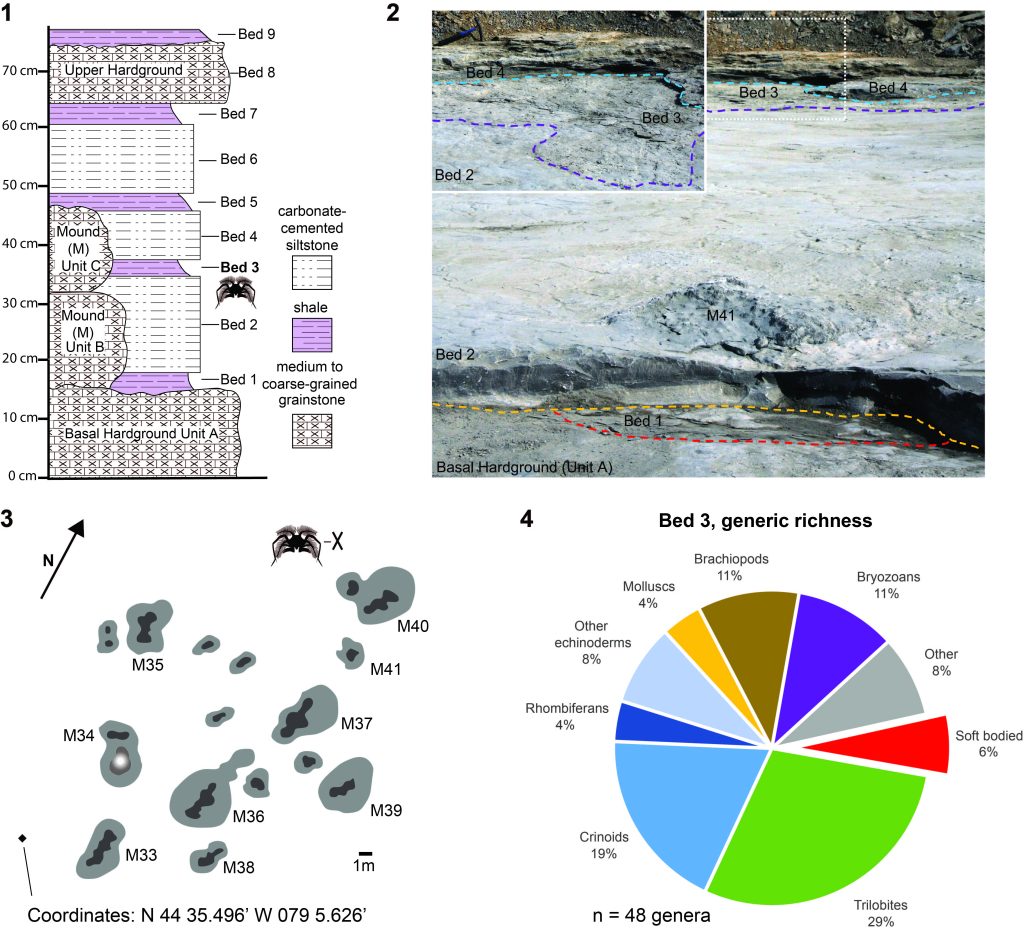
Image: (1) Stratigraphic column in the study area. (2) Photographs of the site showing the beds in which soft-tissue preservation has been observed (3) Topographic map of the main study plot. High relief mounds (prefixM) are numbered and shaded dark
while surrounding basins are shaded lighter. (4) Generic richness subdivided by major fossil group in Bed 3. From Moysiuk et al. 2022. © ROM
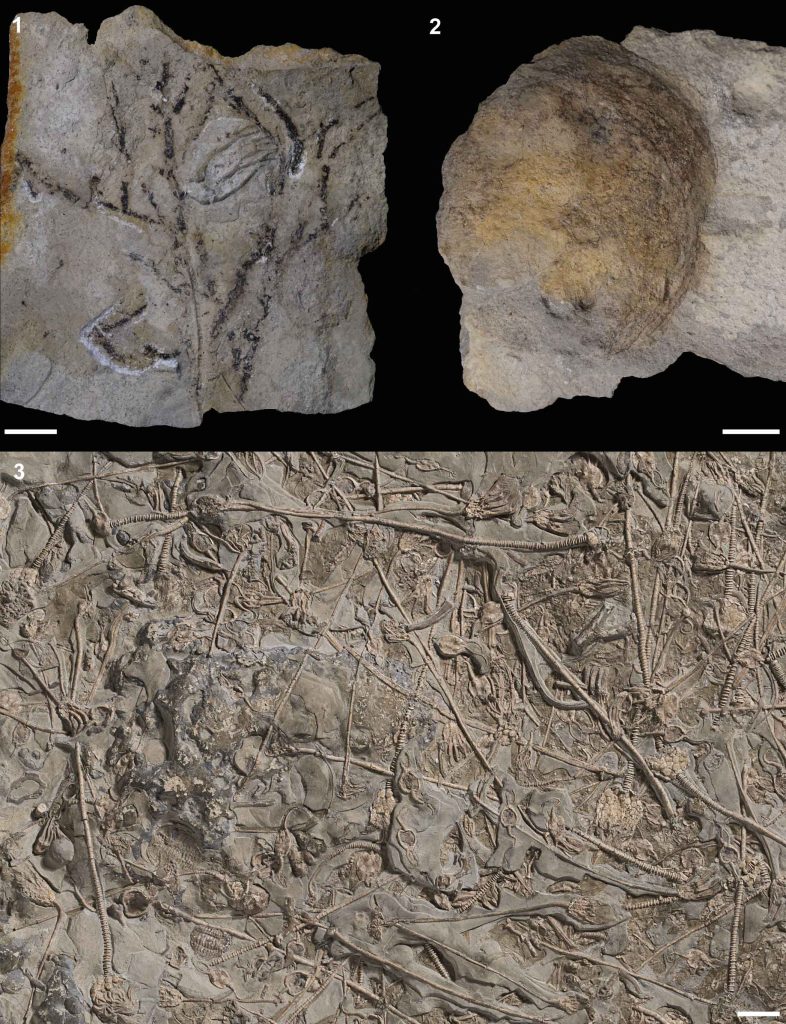
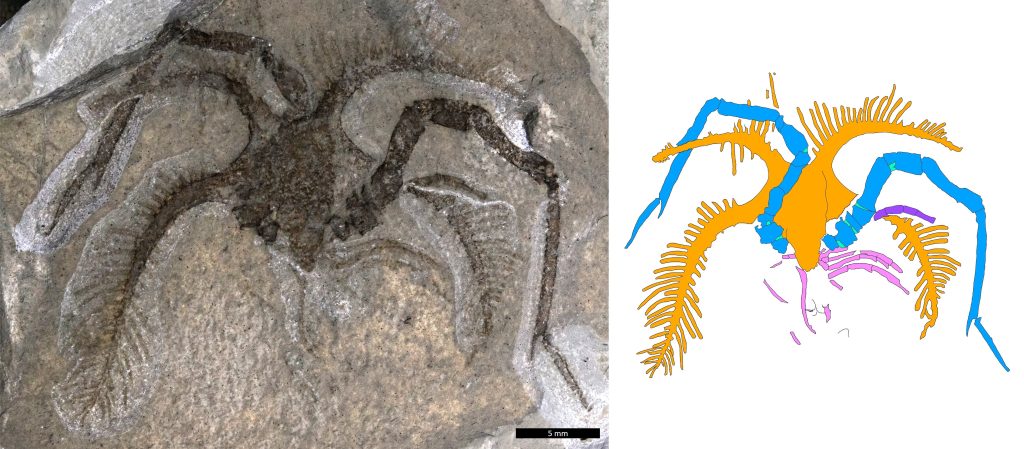
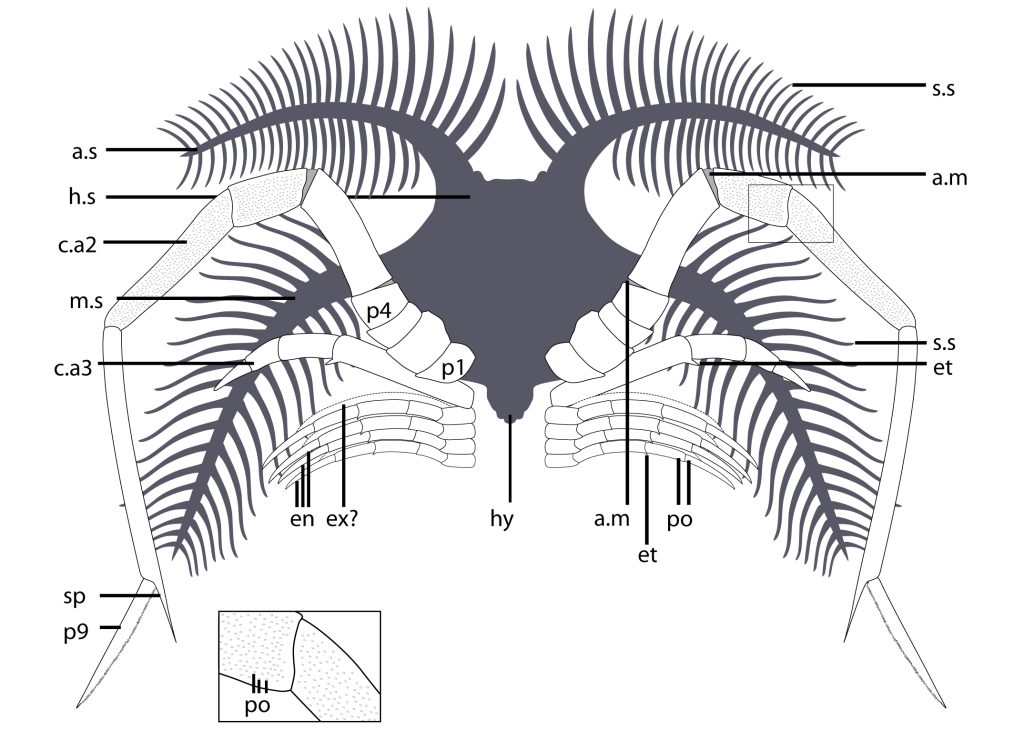
a.s = anterolateral spine; c.aX = cephalic appendage X; en = endopod of trunk appendage; hs = head shield; hy = hypostome; m.s = mediolateral spine; pX = podomere number X; s.s = secondary spine; sp = spine on p8 of hypertrophied limb; a.m = possible arthrodial membrane; et = endite; po = pores; ex = trunk exopod. From Moysiuk et al. 2022. © ROM
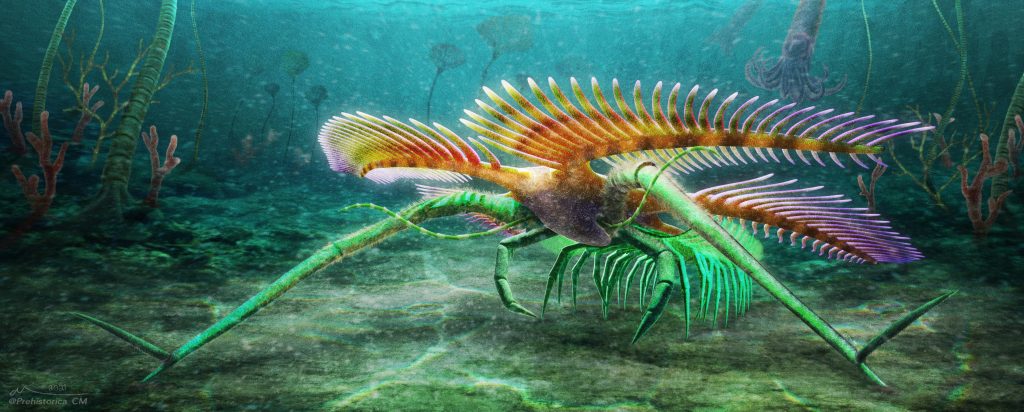
Art by Christian McCall. © ROM
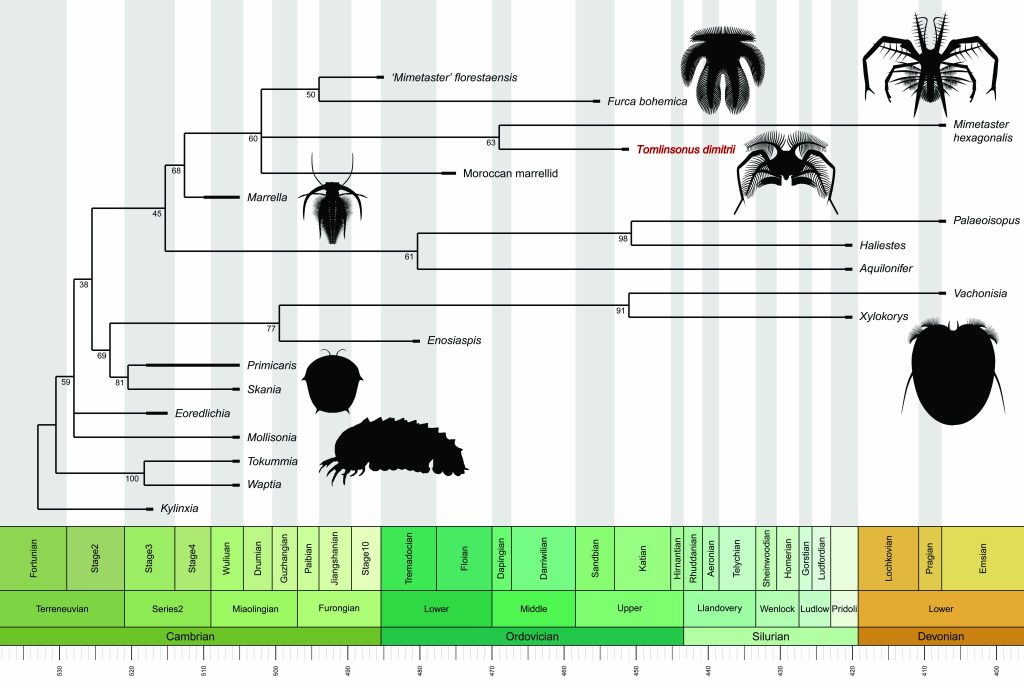
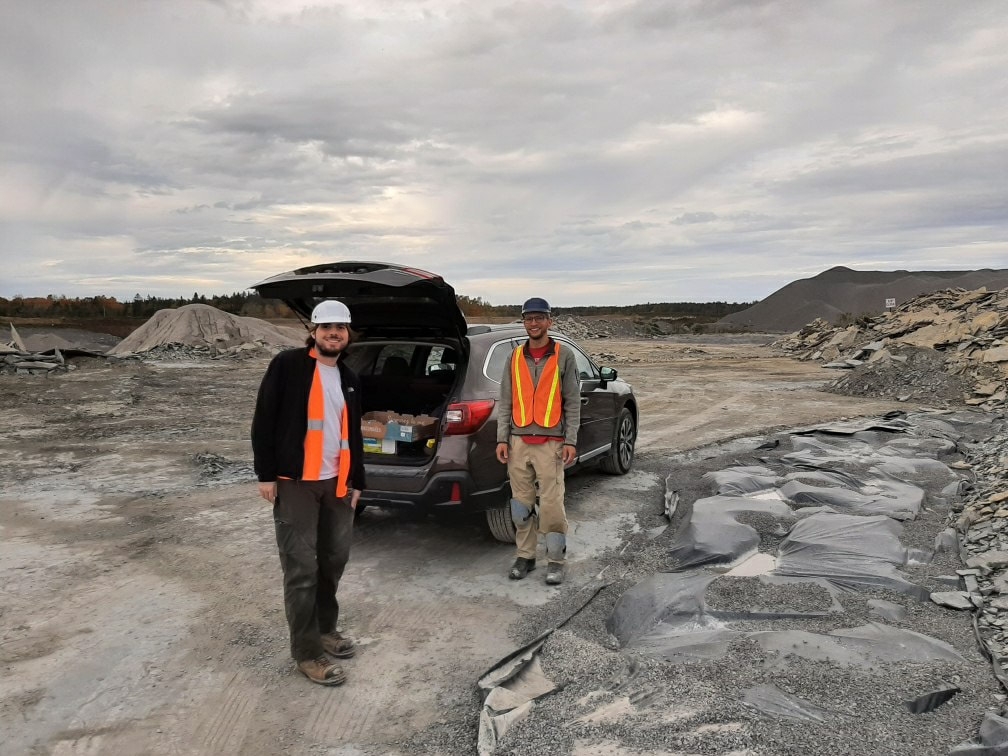
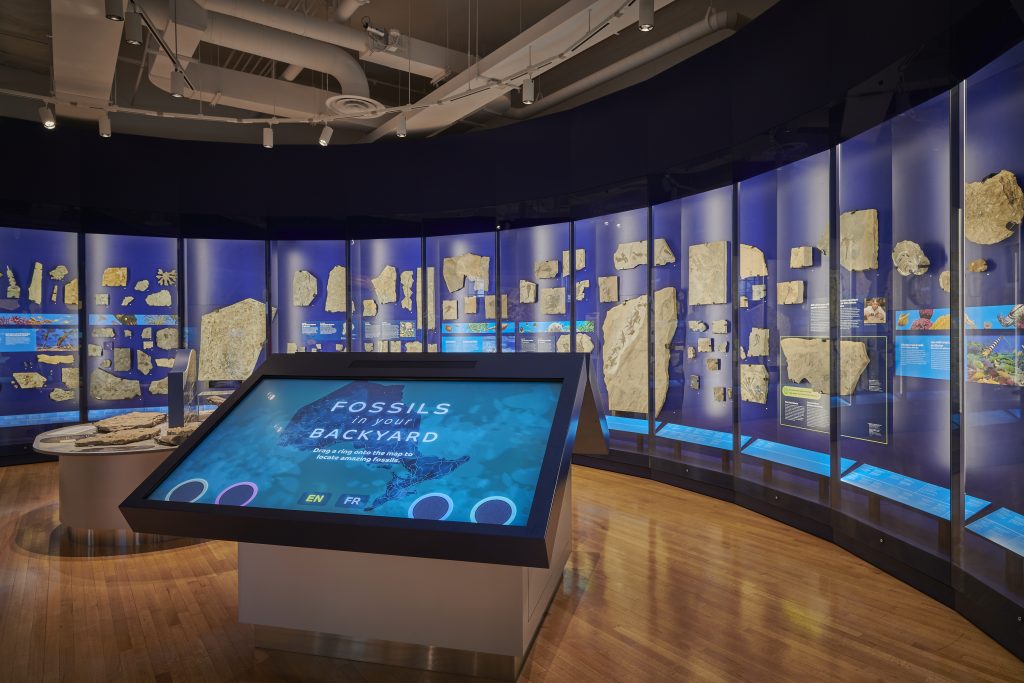
Ontario section of the new Dawn of Life gallery, which includes Tomlinsonus alongside other fossils from Brechin. © ROM

